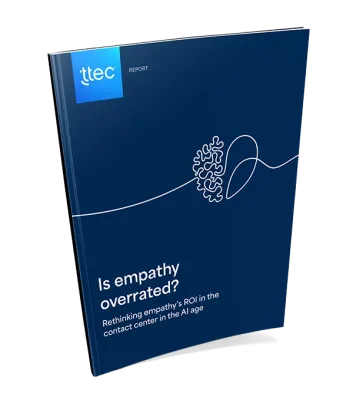With another surge of COVID-19 cases across the United States and elsewhere, the healthcare industry continues to feel pressured.
Balancing the needs of patients and providers, plus the challenges of safety, accurate diagnoses and favorable medical outcomes, practices are turning to telemedicine as a solution. That solution, however, may also offer a peek into the future of the patient experience.
According to the 2020 State of Telemedicine Report by Doximity, 20% of all medical visits will be conducted via telemedicine (also referred to as telehealth) in 2020. That represents more than $29 billion in medical services, a figure that researchers expect to more than triple in the next three years.
CNBC, citing Forrester Research, reports that total telehealth visits could top one billion this year.
The vast majority of telemedicine patients, Doximity found, are new to the virtual technology. But they are slowly getting more comfortable with it, and some say they expect to continue using it after the pandemic ends.
Doctors have also had to learn on the fly.
“We've definitely learned to live with telemedicine and have noted certain benefits, although there are still challenges,” says Dr. Sonia Kupfer, Associate Professor of Medicine at the University of Chicago’s Department of Medicine Section of Gastroenterology, Hepatology and Nutrition.
The good news for both providers and patients is that telemedicine seems to be working from an experience perspective.
A study by Penn Medicine found that 67 percent of its patients considered their video and telephone appointments as “positive and acceptable substitutes to in-person appointments.” Clinicians rated them even higher, at 88% positive.
The combination of enhanced technology and maintaining the personalized, human element of a medical appointment is what makes telemedicine so appealing to both patients and providers. In addition, the experience removes a lot of traditional experience pain points, such as traveling to and from the appointment, waiting in the reception area, and potential exposure to other sick patients.
Convenience is often cited as a key influence in provider choice and patient experience. The distance from one’s home, the availability of appointments, and the estimated wait times are all important factors. Telemedicine provides the ultimate convenience even for those in rural or other underserved communities, making it an easy choice for basic healthcare at a minimum.
Dr. Kupfer said that she expects the telemedicine experience to continue to evolve.
“Televisits are definitely part of the future of healthcare and we need to continue learning to thrive with it for the proper indications,” she said. “Ongoing innovation to make the experience beneficial for the patient and clinician is critical.”
In other words, like many things during the pandemic, telemedicine was thrust into service out of urgent necessity, so the experience probably isn’t optimal yet.
Indeed, the dental industry initially saw a lot of interest in teledentistry, but that has waned since many dental offices have reopened, according to Chuck Cohen, managing director of Benco Dental.
Still, some doctors are likely to leverage telemedicine as a differentiator even post-pandemic. It has even shown potential in healthcare for pets.
Dr. Jeff Bloomberg, President of Bloomberg Veterinary Services and a 20-year veterinarian, said: “Six months ago I would have called telemedicine a ‘short-term alternative’ to how we interact. Now I've come to realize that the pandemic's forced changes to our processes in many ways will benefit us long-term. "
Future customer experience enhancements to telemedicine may include:
- Continued reduction of associated costs. When patients don’t have to travel and feel they are receiving a similar level of care for a reduced price, they will be more likely to maintain a regular schedule of appointments, leading to better health outcomes. Providers, insurers, and PBMs (pharmacy benefit managers) must pay attention to costs and attempt to create as much efficiency as possible for telemedicine to be successful.
- Helping patients feel heard. The in-office experience may sometimes feel rushed, especially after a long wait, which may lead some patients to skip important questions on their mind. With telehealth, every patient gets their scheduled time allotment without waiting and without feeling rushed. When patients get their health questions answered, they are more confident in the process and more likely to stick to critical health routines.
- Improving the technology. Issues such as privacy, Wi-Fi bandwidth, accessibility of medical records, and the ability of patients to self-administer certain diagnostic tests will help providers arrive at better medical conclusions and insurers better assess coverage. Expect activity tracking and health monitoring data from smartphones and other devices to be integrated into the patient file for a more complete health picture.
Additionally, organizations must seek to measure the relative success of telemedicine vs. in-person appointments. According to Ingenium Digital Health Advisors, this involves looking at four factors:
- Input measures such as time, cost and other resources needed to deliver telemedicine
- Output measures such as the number of patients seen in a given time period
- Quality measures such as patient and provider satisfaction
- Outcome measures such as improved health and reduced emergency room visits
So what can medical providers, insurers, and PBMs do to manage the virtual (or hybrid) patient journey, even as it continues to change and mature?
- Set expectations for the patient. Prepare them for their initial visit by explaining what it will be like, confirming they understand the technology, and answering any questions they may have.
- Develop a website FAQ with information about common technical issues and how to fix them.
- Communicate early and often. Especially during a pandemic, customers and patients are craving information, so err on the side of overcommunicating vs. under-communicating.
















